The Ultimate 50+ Destination Guide
Got a great reason to travel? We’ve got the perfect place for you to go
VACATION SPOTS OFTEN come preselected, whether it’s your annual week at the lake or your niece’s destination wedding. When you’ve got more leeway, though, the options can quickly start to feel overwhelming. You’ve decided you’re finally going to Europe! But where, exactly? You want to take your sweetie on a romantic getaway, and that’s as far as you’ve gotten.
Until now. We did some digging into 10 common travel scenarios and came up with appealing destinations, all highly recommended by travel experts. Have a look and see whether one of them might satisfy your wanderlust.
Here’s where to go when you want to ...
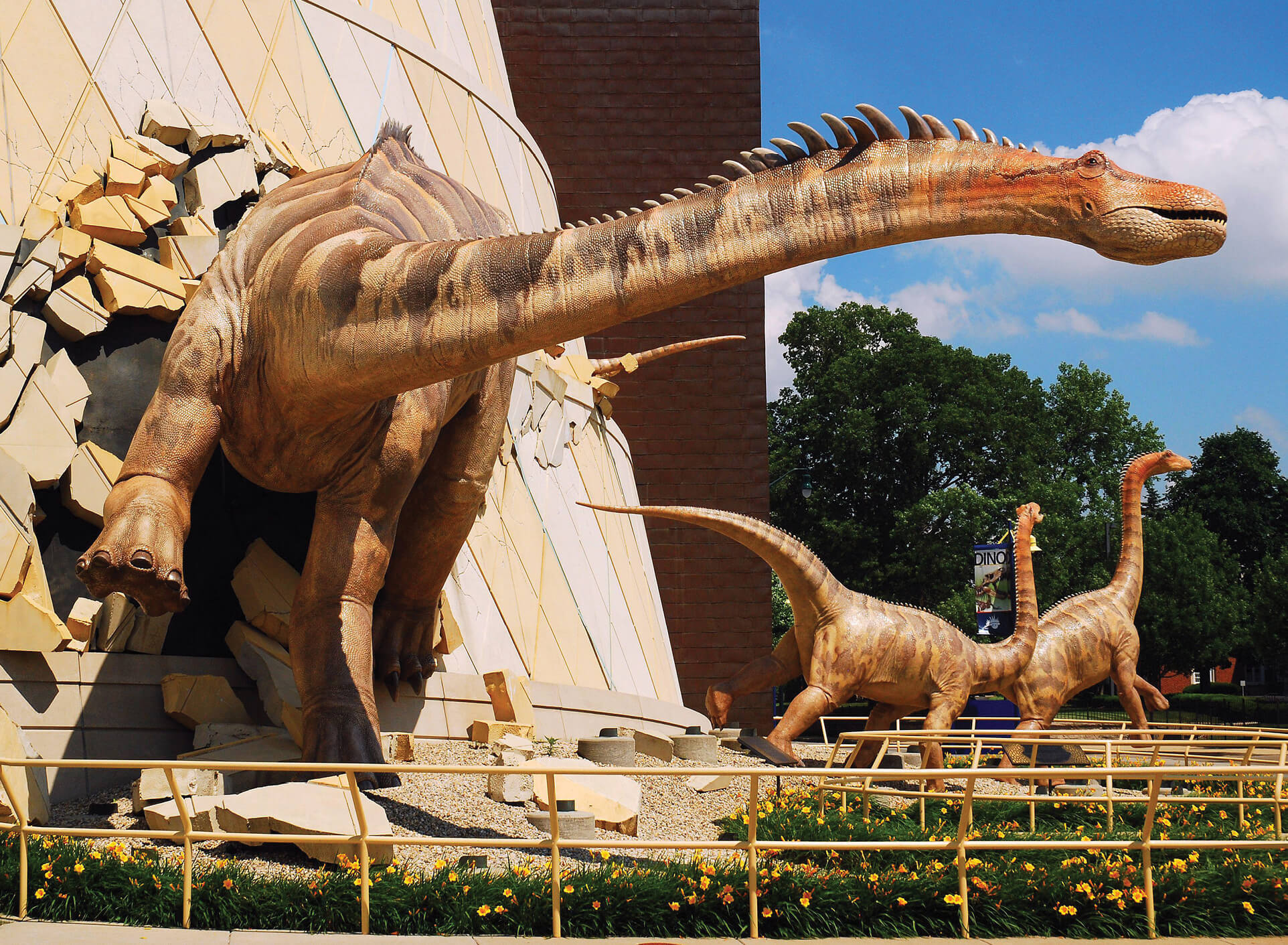
ENTERTAIN THE GRANDKIDS:
Indianapolis
Consider it a sleeper pick for Happiest Place on Earth. Indiana’s flat and unassuming capital, often gently derided as “Naptown” for its lack of urban dazzle, is surprisingly well stocked with attractions aimed squarely at an age spectrum with earlier bedtimes. Start with the Children’s Museum of Indianapolis, which celebrates its 100th anniversary in 2025. Billed as the largest of its kind in the world, the four-level, 800,000-square-foot fun factory excels in hands-on learning and kid-focused curation; it’s laden with exhibits on dinosaurs, space, trains, mummies and other stuff that mesmerizes small people, plus more than seven acres of outdoor play space capable of exhausting the most determined youngster. Five miles away, the top-ranked Indianapolis Zoo is a triple treat, with an accompanying aquarium and extensive botanical gardens. And the Indianapolis Motor Speedway Museum, located at the famed motorsports track that hosts the Indianapolis 500, offers track tours—plus, once renovations are complete in April 2025, a dizzying trove of racing cars and automotive exhibits for the budding gearhead. After a few days of this, you’ll need a nap too.
OR CONSIDER: Endless free museums and monuments in Washington, D.C., make the U.S. capital a place where kids, at least, get a lot done. Looking for all the water parks? They’re in the Wisconsin Dells.
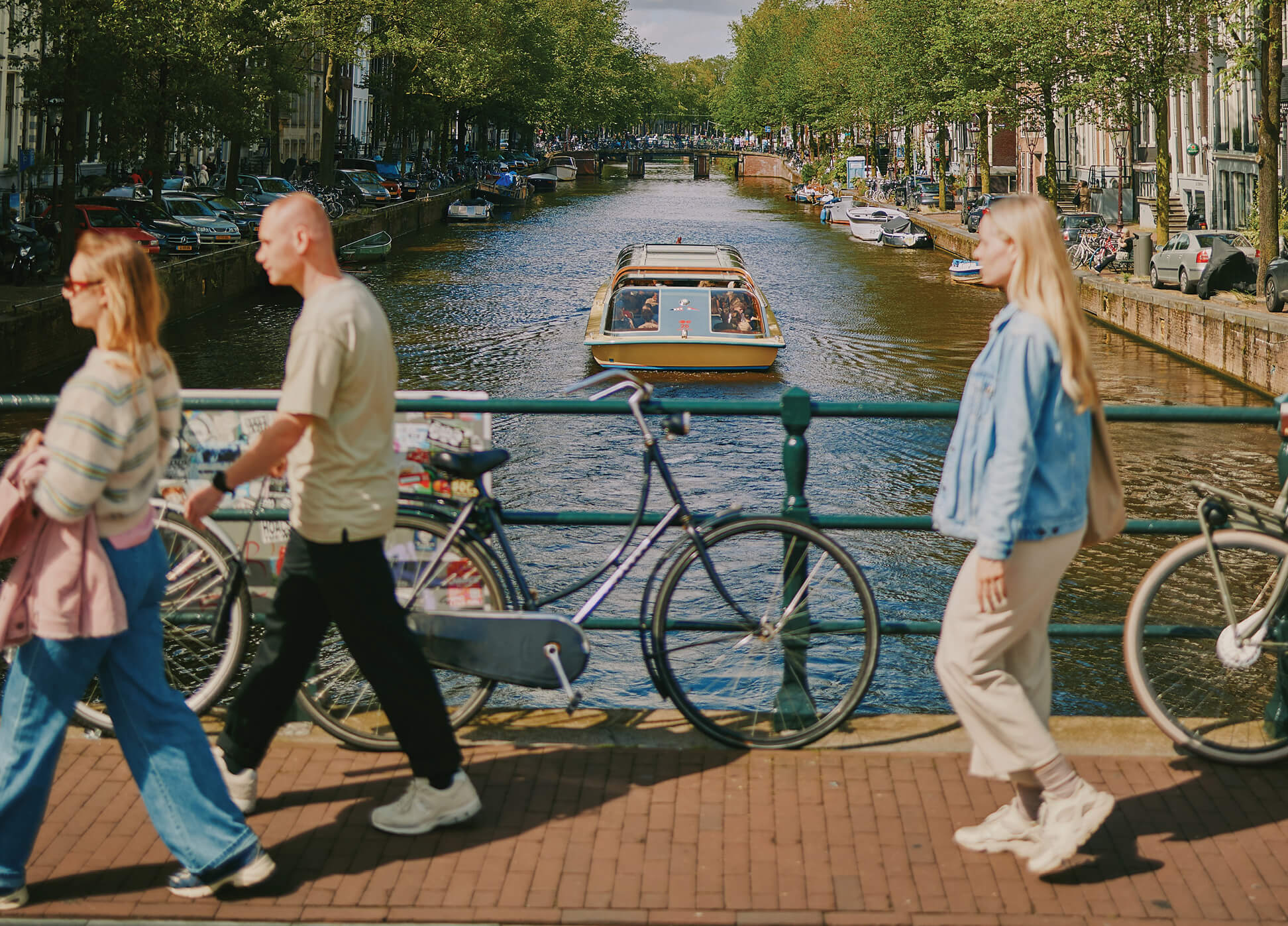
VISIT EUROPE FOR THE FIRST TIME:
Amsterdam
If you’ve never navigated a European city, the low-key capital of the Netherlands offers a particularly approachable entry-level destination. Smaller than rivals like Paris and less tourist-thronged than Venice—another canal-filled city—Amsterdam is blissfully walkable, as well as famously bikeable. There you’ll find grand cultural spaces like the Rijksmuseum (home of several Vermeers) and historic architecture that’s more charming than overwhelming. The city’s reputation for tolerance and infamous Red Light District draws its share of pleasure-seeking young feestbeest (party animals, in Dutch), but international visitors with more maturity are likely to be welcomed by a largely English-speaking populace eager to show off their city’s quieter neighborhoods, tulip-intensive parks and innovative urban cycling network. Plus, U.S. tourists will feel right at home digging into one of Amsterdam’s other great addictions: its thick-cut, twice-cooked “Flemish fries.”
OR CONSIDER: Rome, host to tourists for millennia, has got the routine down. And there are so many U.S. expats in Lisbon these days that you might feel right at home.

TAKE YOUR FIRST POSTRETIREMENT TRIP:
Seward Highway, Alaska
Nothing says “I will not be checking my email” like hitting the highways of one of the least-populated U.S. states, where cellphone service is spotty but Arctic vistas and wandering moose aren’t. If you have the time, just point your vehicle toward the nation’s top-left corner and negotiate a northwest passage across Canada’s British Columbia and Yukon from the Lower 48. But don’t miss what might be Alaska’s most scenic route: the Seward Highway, which runs for 127 miles from Anchorage to the town of Seward on the state’s southern coast. Along the way, motorists can wheel past spruce forests and snow-capped mountain peaks as they traverse the rugged Kenai Peninsula; instead of drive-throughs and gas stations, prominent roadside attractions include whale-watching pull-offs, icy glacial lakes and waterfalls, and cliff faces full of sure-footed Dall sheep. For those who have left the 9-to-5 grind in the rearview and are pondering what’s next, this often-lonely route through some of the nation’s most inspiring landscapes might be the perfect place to begin the journey.
OR CONSIDER: No trucks and modest speed limits make the gentle Natchez Trace Parkway a must-see meander from Mississippi to Tennessee. For a more vigorous driving adventure, hang on to the Tail of the Dragon, a serpentine stretch of Route 129 in Deals Gap, North Carolina, that boasts 300-plus curves in 11 miles.
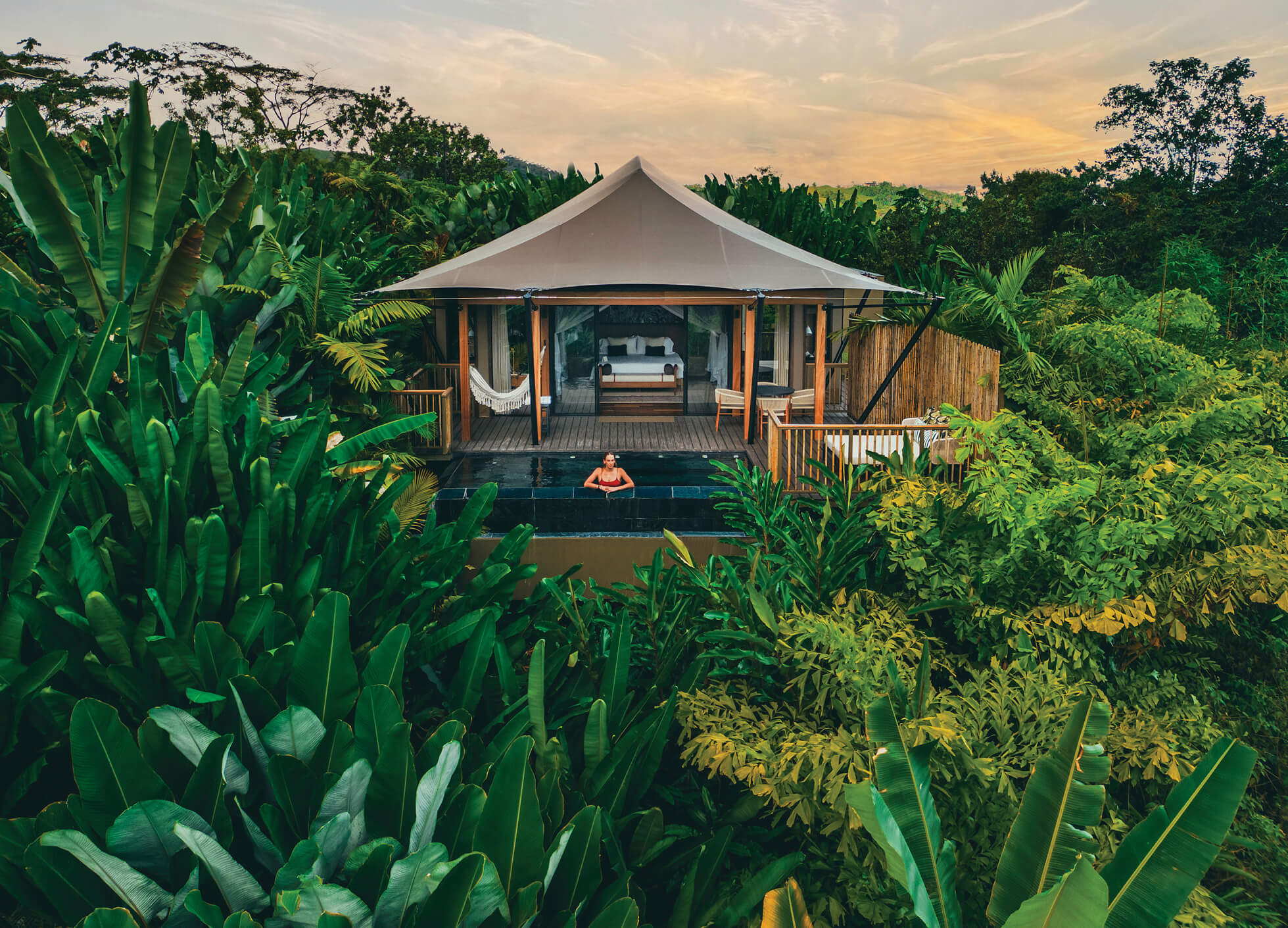
GIVE THE PLANET A BREAK:
Costa Rica
Choosing to travel often involves a troubling trade-off: The tourism sector produces about 8 percent of the planet’s annual carbon emissions, according to one recent estimate, and that share is growing amid resurgent postpandemic vacationing. An airline flight to Costa Rica will be just as polluting as any other, but the lush Central American country has been a leader in modeling “regenerative tourism,” ensuring that the economic benefits from hosting those who flock to coastal resorts and cloud-forest retreats will translate into environmental protections for a fragile and extraordinarily biologically diverse place. (The tiny country is home to more than 5 percent of the world’s animal and plant species.) Almost all of Costa Rica’s electricity is produced from renewable sources, and its strict conservation regime has managed to reverse the damage wrought by decades of deforestation. It’s a model powered in part by tourist dollars, as the parks and reserves that cover much of Costa Rica’s land mass are both critical carbon sinks and delightful zip-lining venues. In addition, the Costa Rican Tourism Institute recently launched a carbon tracker for visitors to calculate—and compensate for—the greenhouse gas emissions they generate during their stay.
OR CONSIDER: The waterfalls, geysers and geological wonders of Iceland are scattered around an island nation powered almost entirely by geothermal energy and hydropower. The Himalayan kingdom of Bhutan halved its sustainable development fee, a daily toll for tourists that goes to fund environmental programs, infrastructure upgrades, cultural preservation and free health care and education.
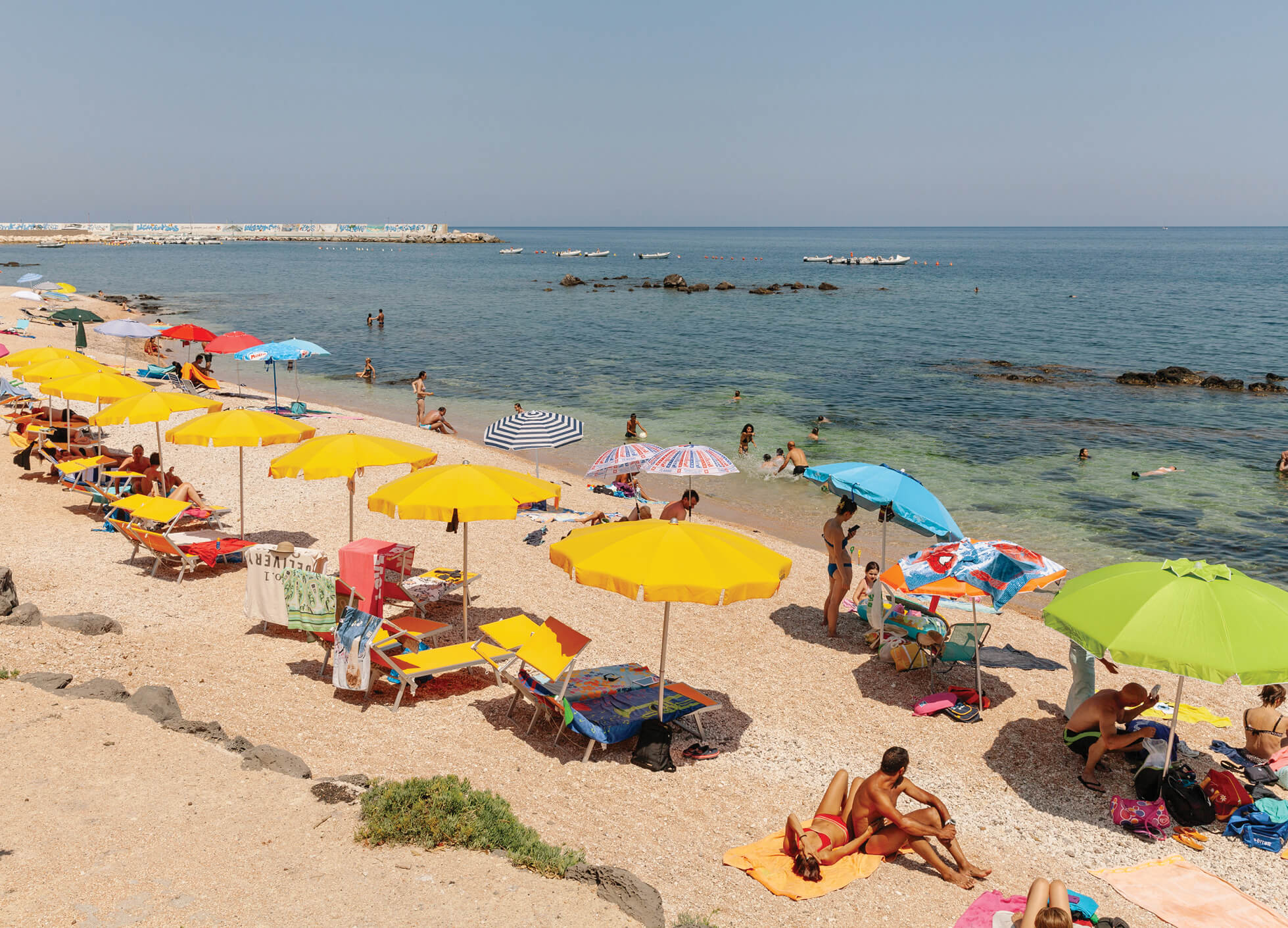
KICK-START YOUR HEALTH:
Sardinia, Italy
A recently expanded international airport may help put this rugged and rustic Mediterranean outpost more on the map for U.S. travelers. But longevity researchers have been traveling there for years. Villages in the mountainous interior are home to the world’s largest cluster of male centenarians, a demographic distinction that brought Sardinia to the attention of author and impresario Dan Buettner, who named it a “Blue Zone” because of its residents’ extraordinarily long lives. A Sardinian getaway isn’t guaranteed to give you an extended lifespan, but it probably can’t hurt, especially if you find inspiration in the local formula of vigorous hillside walks, stress-reducing ocean views, and plenty of (but not too much) local red wine and goat’s milk cheese. The sun-drenched island also offers a less-hectic alternative to the glitzy beach resorts on the Italian mainland, and it has long been a popular shadow destination for the European jet set.
OR CONSIDER: The spas of Sedona, Arizona, promise a detox in a striking desert setting. Affluent New Yorkers can escape urban stress at the luxury wellness attractions of the nearby Hudson Valley.
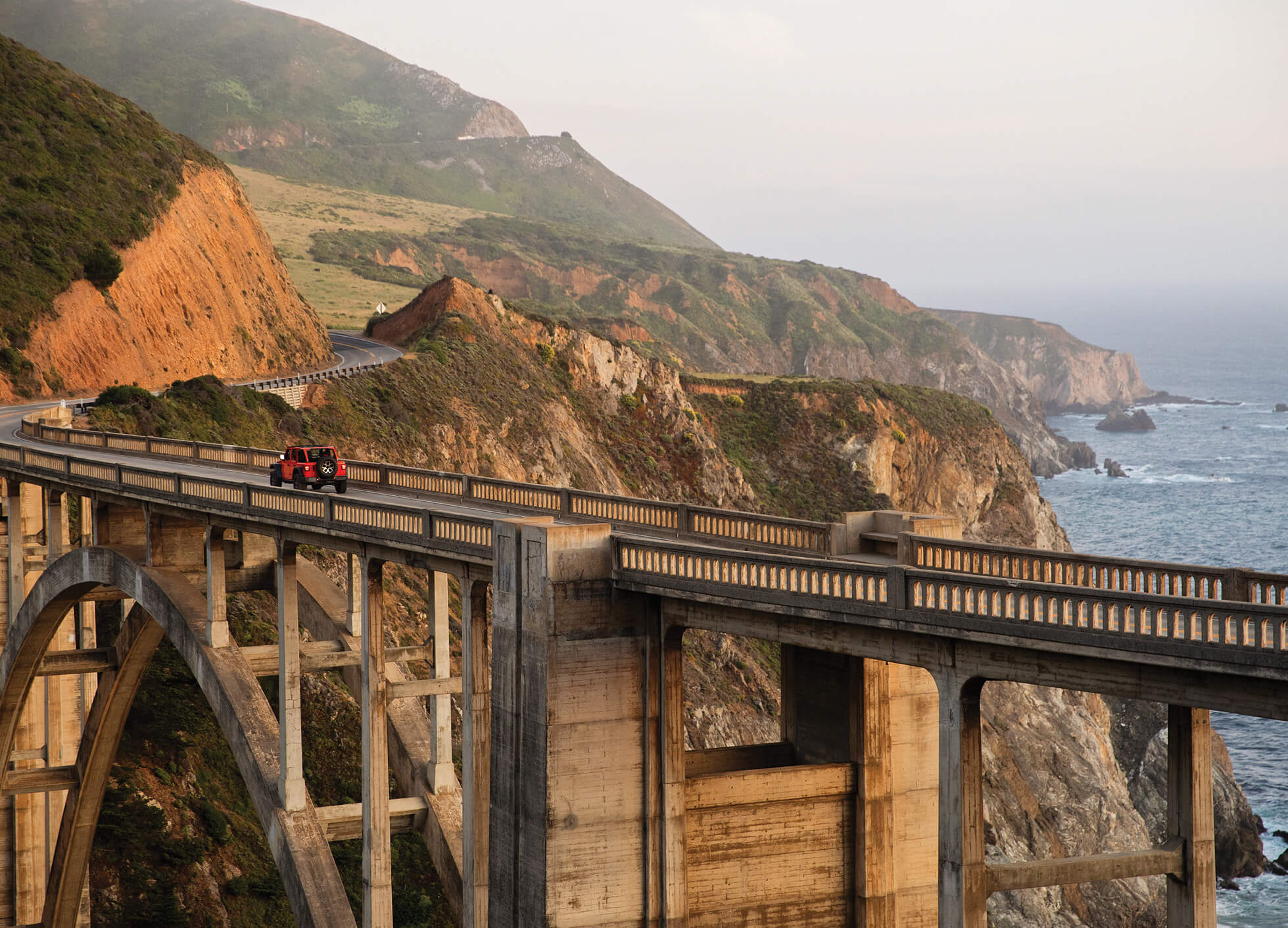
REKINDLE YOUR ROMANCE:
Big Sur, California
Even if you missed (or forgot) the 1967 Summer of Love, the Bay Area retains its patchouli-fogged reputation as a hotbed of personal growth and reinvention. This famed coastal community a couple of hours south of San Francisco makes a suitably stunning backdrop for a couple seeking transcendence, or just a fresh spark. But bring your wallet: Locked between mountains and sea, Big Sur boasts a stretch of high-end hotels, resorts and retreats—including the venerable New Age self-actualization campus of the Esalen Institute—strung among the redwoods and cliffsides of California Highway 1. Exclusivity and isolation are part of its appeal; in recent years, access to this famed bohemian enclave has frequently been limited by a series of road-closing landslides, thanks to storm-driven erosion. But Big Sur is open for business again, and whether you come here to commune with nature, each other or the forces of the universe, you and your loved one will likely return home changed.
OR CONSIDER: The stuff they say about Venice? It’s all true, especially if you catch the haunting lagoon city outside of the summer crush. And the Indonesian island of Bali’s role as a rom-com setting is equally well-earned.
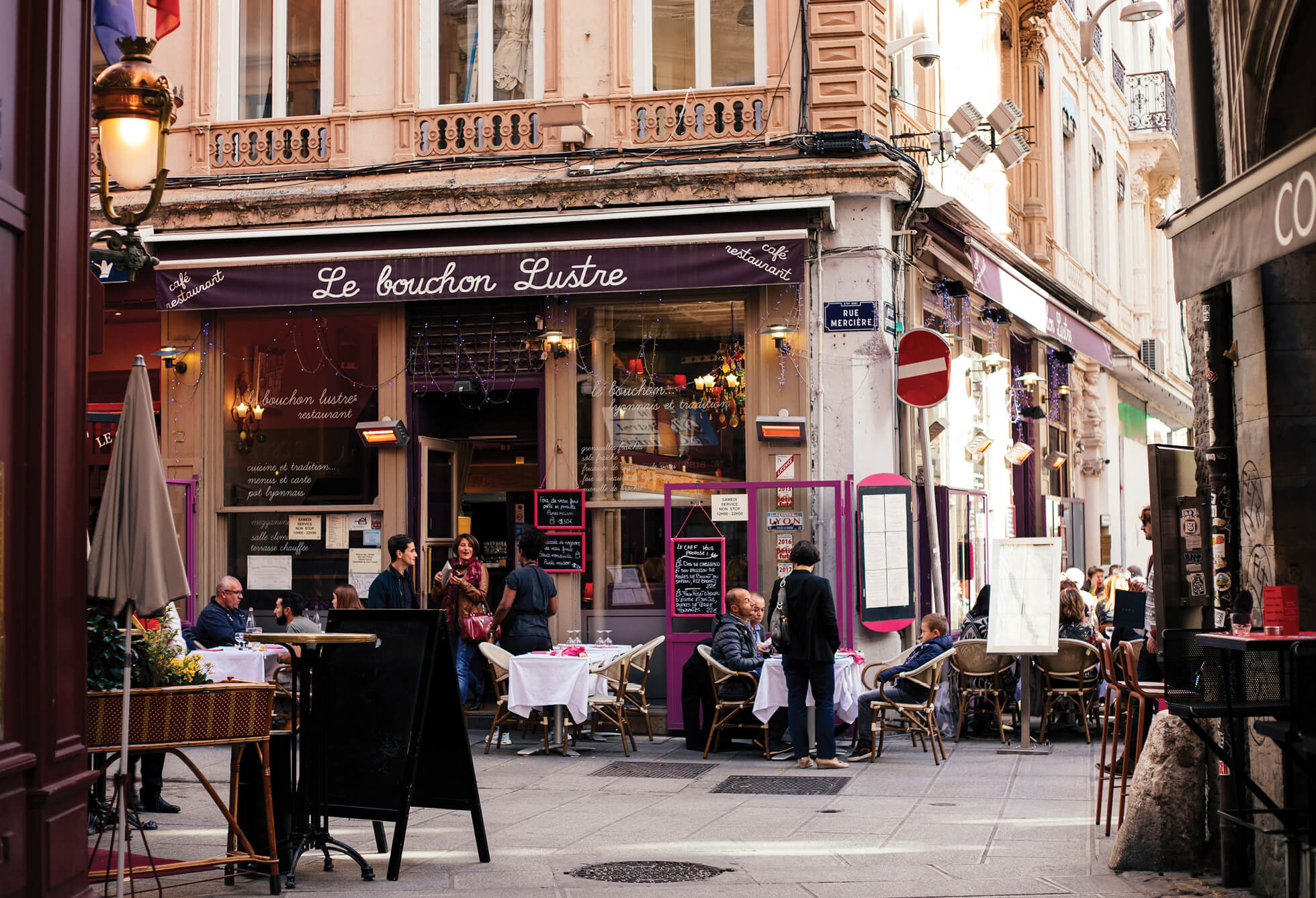
EAT THE MEAL OF A LIFETIME:
Lyon, France
Just two hours from Paris via high-speed train, the city of Lyon feels worlds apart. Layered with architectural history that dates to the Roman Empire, it’s a UNESCO World Heritage Site fully equipped with a fairy-tale medieval cathedral, a plethora of ornate Baroque-era public buildings and one of the largest public squares in Europe, the 15-acre Place Bellecour. But c’mon: You are here to eat. Strategically located at the crossroads of the nation’s various culinary regions, Lyon is the undisputed capital of French cooking, the birthplace of nouvelle cuisine and home to a constellation of Michelin-starred restaurants, led by the flagship establishment of the late chef Paul Bocuse, L’Auberge du Pont de Collonges, which celebrates its 100th anniversary in 2024. If you fail to score a reservation, the city has plenty of other options. The less-formal restaurants known as bouchons are revered as pork-heavy redoubts of traditional Gallic gastronomy—think salade Lyonnaise, coq-au-vin and quenelles—while a newer generation of innovative restaurateurs has pushed this venerable foodie destination to new heights.
OR CONSIDER: For what might be the world’s best street food, try the UNESCO-recognized hawker stalls of Singapore. For life-changing mole and much more, it’s Oaxaca in southern Mexico, the nation’s much-lauded culinary capital.
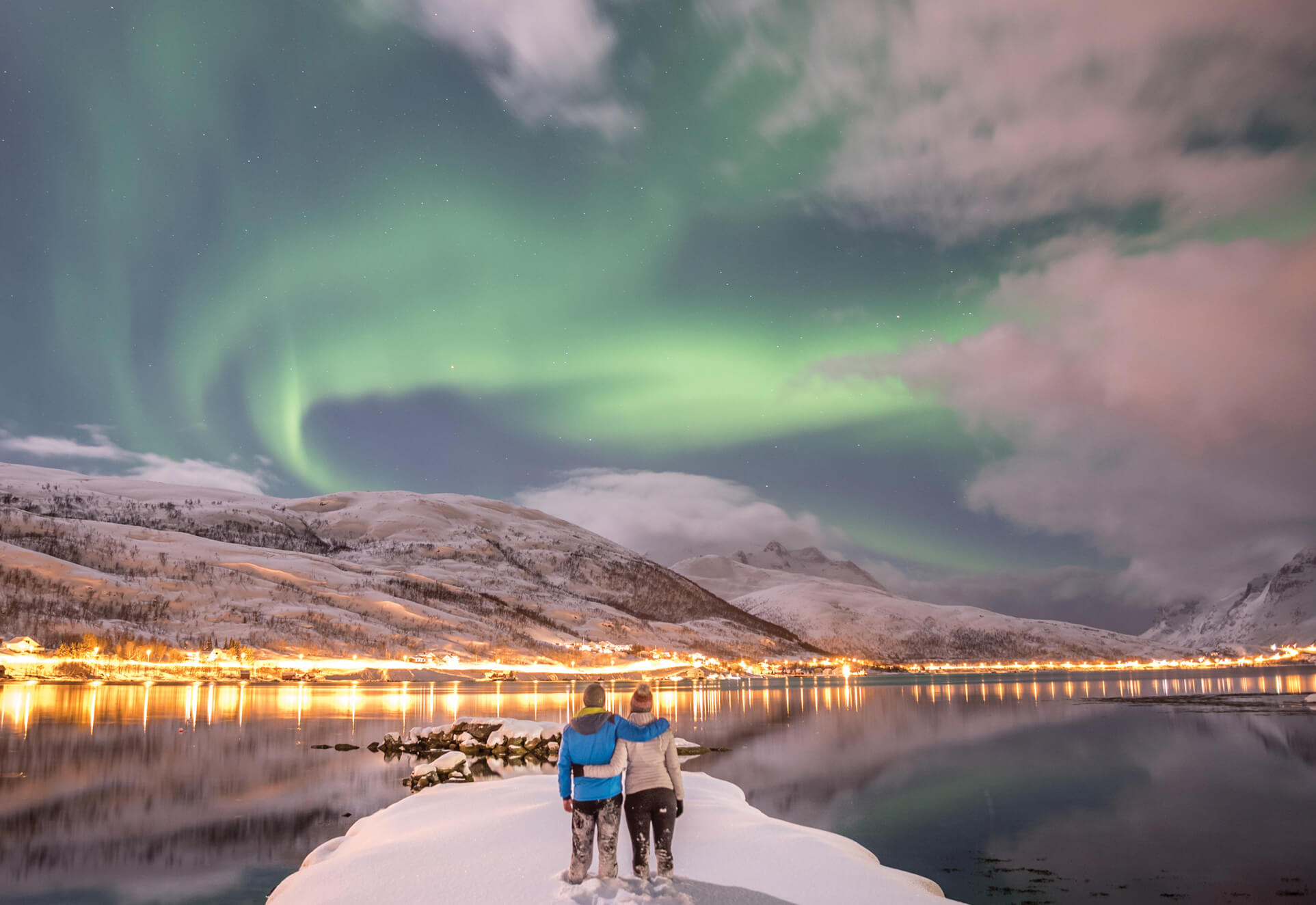
MARK A PERSONAL MILESTONE:
Tromsø, Norway
When strong solar storms brought the shimmering northern lights further south than usual in May 2024, millions of Americans caught a glimpse of an astronomical phenomenon that usually makes only rare local appearances. But should you venture deep into northern Norway between September and April, you’ve got a far better chance of witnessing the aurora borealis, especially as 2025’s “solar maximum”—a period of peak activity for sunspots and solar flares—approaches. Norwegian cities like Tromsø, which huddles just over 200 miles north of the Arctic circle, have built their tourism infrastructure around staring up at the sky. After a two-hour flight from Oslo, visitors can take a dogsled tour far from the city lights or a fjord cruise through the long polar night, or splurge for a deluxe glamping experience in a glass “aurora hut,” where you drift to sleep beneath flickering ripples of astral radiation. A wintertime trip to the edge of the North Pole might not be for everyone, but for those intrepid enough to try, the skies above this stark and beautiful landscape might deliver a spectacle worthy of that once-in-a-lifetime adventure.
OR CONSIDER: Do like Darwin and visit the Galápagos Islands. Or step inside Meteor Crater near Winslow, Arizona, to remind yourself how small we really are.
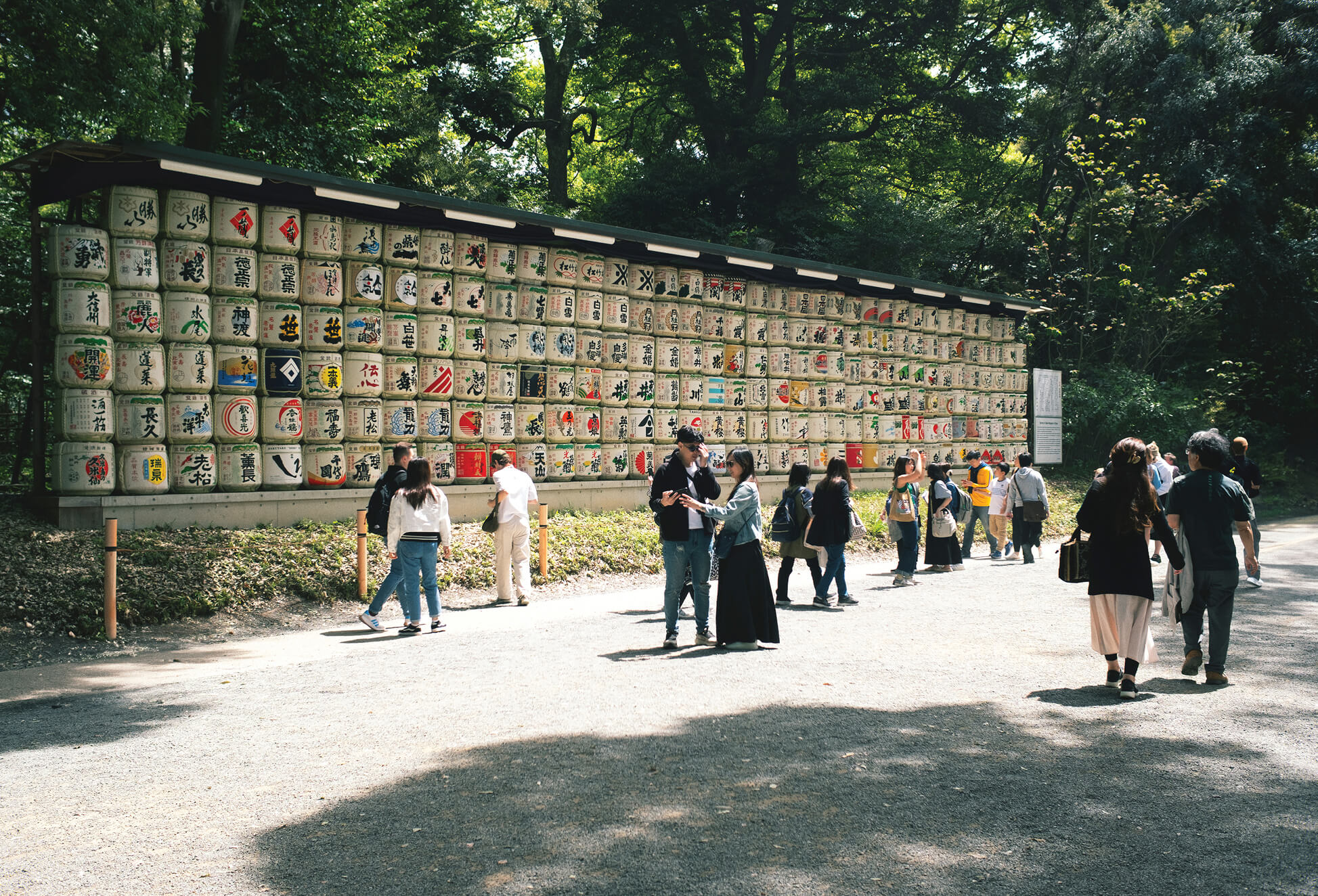
HAVE A WHEELCHAIR-FRIENDLY ADVENTURE:
Tokyo
It’s easy to be overwhelmed by life in the world’s largest city: Greater Tokyo holds more than 37 million people. But first-time visitors often marvel that moving around the sprawling Asian megalopolis is easier than expected, thanks to an extensive subway and rail system that stands as something of a wonder of the world. Despite the complexity and busyness of the network, abundant multilingual signage and the orderliness of both riders and facilities ease the task of finding one’s way around the maze of under- and aboveground lines. That’s especially true for riders with disabilities, as Tokyo launched a major effort to improve accessibility in the run-up to the 2020 Summer Olympics and Paralympics. The COVID-19 pandemic kept the crowds home for the events themselves, but the wheelchair-using international tourists who are now packing the city’s shops, shrines and sushi restaurants are taking advantage of upgraded infrastructure. Most of Tokyo’s transit stations are now accessible, and many older hotels and public attractions have been recently renovated to remove barriers and retrofit facilities for a wider variety of users.
OR CONSIDER: The gambling mecca’s explosive modern development means that much of the Las Vegas Strip and its attractions were built or renovated after the 1990 passage of the Americans With Disabilities Act. The large share of accessible sights and widespread availability of wheelchair-friendly black cabs make London a top pick.

REFLECT ON THE MEANING OF PEACE:
Montgomery, Alabama
When the National Memorial for Peace and Justice opened in 2018, it emerged as the newest and perhaps most challenging of the many civil rights landmarks clustered in and around Alabama’s capital city. Informally known as the National Lynching Memorial, it’s a monument to the more than 4,400 victims of racial violence between 1877 and 1950—the first of its kind in the U.S., and a sobering stop for travelers seeking solace, illumination or inspiration in the history of the pursuit of equal rights. Despite the often-harrowing material it confronts, the six-acre site itself is a place of beauty and contemplation, and it’s part of a larger complex of gardens, pavilions, a museum and a sculpture park devoted to chronicling the passage from enslavement to freedom. Nearby, there’s a jumble of signposts from that journey: The First White House of the Confederacy, a historic home that served as Jefferson Davis’ residence at the start of the U.S. Civil War, stands blocks from the Dexter Avenue parsonage where Martin Luther King Jr. lived in the 1950s. Museums devoted to the antisegregation activism of Rosa Parks and the Freedom Riders dot the small city’s modest downtown, which is also marked by Maya Lin’s Civil Rights Memorial and its accompanying interpretive center. It’s a heady, and heavy, mix. But at a time when Americans again struggle to find common ground, a trip to Montgomery could be a powerful reminder to your family of how much progress has been made.
OR CONSIDER: Berlin’s transformation from a divided Cold War city to the cosmopolitan capital of a reunited Germany offers hopeful lessons. For a soul-calming respite in one of the world’s most hectic spaces, get lost in the artificial wilderness of Central Park in the middle of New York City.
David Dudley is a writer and editor based in Baltimore.